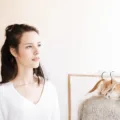Minimalism is a lifestyle that emphasizes focusing on what’s most important by removing things that are unnecessary. It’s about living intentionally with less to find more freedom, fulfillment, and joy in life.
Why Try Minimalism?
There are many benefits of minimalism, including:
- Less stress from clutter and possessions
- More time since less time managing stuff
- More money saved from not buying unnecessary things
- Feeling lighter and more focused
- Appreciating what you have more
Getting Started with Minimalism
If you want to start living more minimally, here are some tips:
- Start small by decluttering one area at a time
- Evaluate your belongings and only keep what you really need or brings you joy
- Avoid buying things just because they are cheap or on sale
- Focus more on experiences rather than things
- Organize and properly store what you decide to keep
Minimalist Living Tips
To maintain a minimalist lifestyle:
- Establish routines so you use what you have
- Store items properly to avoid losing track of them
- When buying something new, consider getting rid of something
- Buy multifunctional and durable items when possible
- Focus more on needs vs. wants
Minimalist Mindset Shifts
In addition to changing your home and belongings, minimalism requires some mindset shifts:
- Focus less on the pursuit of money and possessions
- Cultivate gratitude for necessities you may take for granted
- Prioritize relationships and experiences over material goods
- Find meaning and purpose not in what you own but in using your unique gifts
- Embrace simplicity and recognize excess often leads to stress
Frequently Asked Questions
What are the main principles of minimalism?
The main principles are focusing on keeping only essential, useful, and meaningful possessions. It emphasizes intentionality, quality over quantity, simplicity, gratitude, experiences over material goods, and using your unique talents over mindless consumption.
How do you become a minimalist step by step?
Start small by decluttering one area at a time. As you declutter, evaluate each item and only keep what you really need or brings you a lot of joy. Avoid buying things just because they are cheap or on sale. Establish routines to properly use what you keep. When buying something new, consider getting rid of something.
What should you not minimalize?
Avoid minimalizing anything with strong emotional ties or that supports your values, sparks creativity, or brings real joy and purpose to your life. Also be careful not to minimalize essential tools, helpful health items, or things that would be costly to replace.
Is minimalism expensive?
Minimalism is focused on quality over quantity. So you may spend more per item, but by owning significantly less stuff overall it can be quite cost effective long-term. Plus, beyond purchases, it saves money spent storing, cleaning, managing, even renting larger spaces for more possessions.
How do I start minimalism step-by-step?
Start small by tackling clutter one area at a time vs. doing everything at once. As you declutter, evaluate each item and only keep the essentials that add value. Establish routines for using what you keep to avoid new clutter piles. Focus purchases only on true needs or meaningful experiences vs impulse wants.









